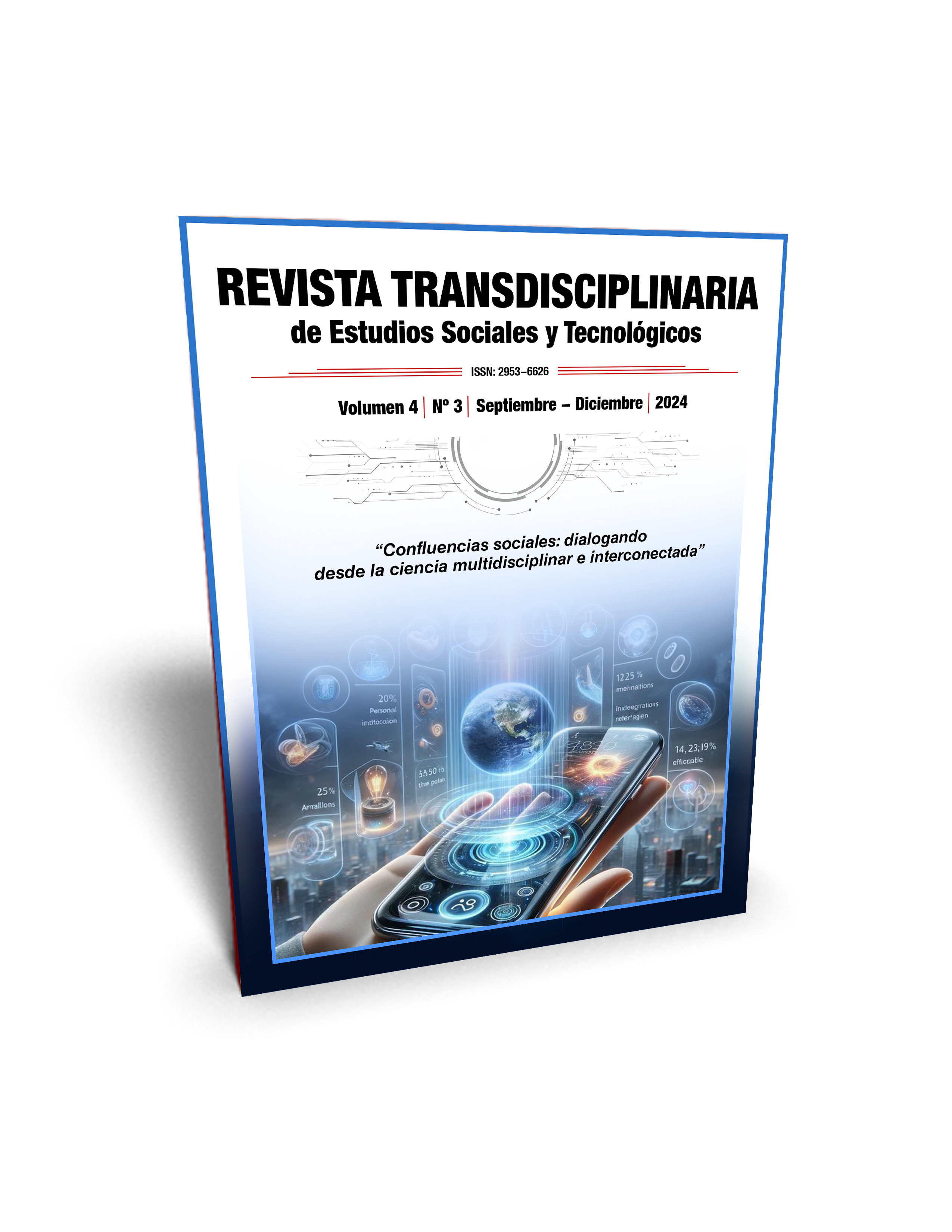Investigation of blockchain technologies in accounting and auditing: an approach towards transparency and security of financial data
DOI:
https://doi.org/10.58594/rtest.v4i3.129Keywords:
Blockchain, accounting, auditing, financial transparencyAbstract
This study aims to analyze the application of blockchain technologies in accounting and auditing, with emphasis on its potential to improve the transparency and security of financial data in Ecuador and South America. The methodology used consists of a systematic review of recent literature (2020-2024) and a qualitative analysis of relevant case studies, complemented by interviews with sector experts. The main findings indicate that the implementation of blockchain can significantly reduce audit times, improve the traceability of financial transactions and increase trust in accounting systems. Cases such as the PIER platform of the Central Bank of Brazil and Agrotoken demonstrate the potential of blockchain to address specific challenges, such as collaboration between financial regulators and access to financing in the agricultural sector. However, significant challenges are identified, including the need to update regulatory frameworks and develop technical competencies. The study concludes that the integration of blockchain in accounting and auditing offers substantial opportunities to improve financial transparency and reduce tax evasion in Ecuador, but requires a holistic approach that addresses technical, regulatory and cultural aspects for its successful implementation.
Downloads
References
Abikoye, B. E., Akinwunmi, T., Adelaja, A. O., Umeorah, S. C., & Ogunsuji, Y. M. (2024). Real-time financial monitoring systems: Enhancing risk management through continuous oversight. GSC Advanced Research and Reviews, 20(01), 465–476. https://doi.org/10.30574/gscarr.2024.20.1.0287
Akerlof, G. A. (1970). The market for “Lemons”: Qualitative uncertainty and the market mechanism. The Quarterly Journal of Economics, 84(3), 488–500. https://doi.org/https://doi.org/10.2307/1879431
Alles, M., & Gray, G. L. (2020). The first mile problem”: Deriving an endogenous demand for auditing in blockchain-based business processes. International Journal of Accounting Information Systems, 38. https://doi.org/10.1016/j.accinf.2020.100465
Appelbaum, D., & Smith, S. S. (10 de Agosto de 2024). The CPA Journal. https://www.cpajournal.com/2018/06/19/blockchain-basics-and-hands-on-guidance/
Banco Central do Brasil. (2024). Web site. https://www.bcb.gov.br
Burga Jadán, M. F. (2023). La gestión financiera en las Pequeñas y Medianas Empresas. Yura: Relaciones Internacionales, 34, 55-72. https://yura.espe.edu.ec/wp-content/uploads/2023/06/34.4-La-gestion-financiera-en-las-Pequenas-y-Medianas-Empresas.pdf
Cárdenas, H. (2015). Criptonoticias. https://www.criptonoticias.com/tecnologia/rubix-la-plataforma-blockchain-de-deloitte/
Cardoso, H. R., Cerqueira, R. S., & Andrade, A. B. (2021). A Aplicabilidade Da Tecnologia Blockchain Às Licitações Públicas. Revista do CEJUR/TJSC: Prestação Jurisdicional, 9(1). https://doi.org/https://doi.org/10.37497/revistacejur.v9i1.368
Delgado, R. A. (2022). Eficiencia en las Contrataciones del Estado caso Odebretch. (Tesis de maestría). Universidad César Vallejo.
Dixit, D. P., Harwani, D. H., kachhi, P., Amarsela, D. R., Patel, D. K., & Patel, D. M. (2024). Incorporating Triple Entry Accounting as an Audit Tool—Enhancing Modern Accounting Systems. Journal of Informatics Education and Research, 4(2). https://doi.org/https://doi.org/10.52783/jier.v4i2.924
Domínguez-Bolaño, T., Campos, O., Barral, V., Escudero, C. J., & García-Naya, J. A. (2022). An overview of IoT architectures, technologies, and existing open-source projects. Internet of Things, 20. https://doi.org/https://doi.org/10.1016/j.iot.2022.100626
Freeman, R. E. (2015). Strategic Management: A Stakeholder Approach. Cambridge University Press.
Gomber, P., Kauffman, R. J., Parker, C., & Weber, B. W. (2018). On the Fintech Revolution: Interpreting the Forces of Innovation, Disruption, and Transformation in Financial Services. Journal of Management Information Systems, 35(1), 220–265. https://doi.org/10.1080/07421222.2018.1440766
Grasso, D. I., Castillo, A., Castillo, F., & Castro Blandón, C. (2022). Casos de uso de blockchain en las cadenas de valor agropecuarias: América Latina y el Caribe. BID LAB. https://doi.org/http://dx.doi.org/10.18235/0004500
Grigg, I. (2024). Triple Entry Accounting. Journal of Risk and Financial Management, 17(2). https://doi.org/10.3390/jrfm17020076
Han, H., Shiwakoti, R. K., Jarvis, R., Mordi, C., & Botchie, D. (2023). Accounting and auditing with blockchain technology and artificial Intelligence: A literature review. International Journal of Accounting Information Systems, 48. https://doi.org/10.1016/j.accinf.2022.100598
Jensen, M. C., & Meckling, W. H. (1976). Theory of the firm: Managerial behavior, agency costs and ownership structure. Journal of Financial Economics, 3, 305-360. https://doi.org/https://doi.org/10.1016/0304-405X(76)90026-X
Lastra, J. I. (2024). Blockchain y la evolución de la contabilidad: implicaciones y oportunidades. Dominio de las Ciencias, 10(2), 1170-1178. https://doi.org/https://doi.org/10.23857/dc.v10i2.3869
Litoussi, M., Makkaoui, K. E., & Ezzati, A. (2023). An overview of Blockchain: Definitions, architecture, versions, applications and future directions. Journal of Digital Science, 5(1), 3-11. https://doi.org/10.33847/2686-8296.5.1_1
Mayer, R. C., Davis, J. H., & Schoorman, F. D. (1995). An Integrative Model of Organizational Trust. The Academy of Management Review, 20(3), 709-734. https://doi.org/https://doi.org/10.2307/258792
Moreano Guerra, C. B., Escobar Erazo, T. E., Mena Freire, V. G., & Herrera Moreno, L. F. (2023). Tecnología Blockchain y su Implementación en los Sistemas Contables: Efectos en la Eficiencia y Transparencia. Ciencia Latina Revista Científica Multidisciplinar, 7(4), 8569-8597. https://doi.org/10.37811/cl_rcm.v7i4.7578
Morgan, I. (2024). New auditing perspectives for a blockchain-based accounting system in the public sector. En, I. Morgan, Continuous Auditing with AI in the Public Sector. CRC Press.
Nicoletti, L., Lombardi, F., Margheri, A., Sassone, V., & Schiavo, F. P. (2017). Cross-cloud management of sensitive data via Blockchain: a payslip calculation use case. (Conferencia). Italian Conference on Cybersecurity. Venecia, Italia.
Prasadhita, C., & Nawawi, M. (2023). Development of Accounting Systems Using Blockchain Technology. Journal Riset Akuntansi Terpadu, 16(2). https://doi.org/http://dx.doi.org/10.35448/jrat.v16i2.22012
Rogers, E. M. (1962). Diffusion of Innovations. Free Press.
Sánchez, M. P., & Rotundo, G. Z. (2018). Teoría de dependencia de recursos: premisas y aplicaciones. Ciencia y Sociedad, 43(1), 75-92. https://doi.org/https://doi.org/10.22206/cys.2018.v43i1.pp75-92
Sarwar, M. I., Nisar, K., Khan, I., & Shehzad, D. (2023). Blockchains and Triple-Entry Accounting for B2B Business Models. Ledger, 8. https://doi.org/https://doi.org/10.5195/ledger.2023.288
Sheela, S., Alsmady, A. A., Tanaraj, K., & Izani, I. (2023). Navigating the Future: Blockchain’s Impact on Accounting and Auditing Practices. Sustainability, 15(24). https://doi.org/10.3390/su152416887
Sheldon, M. D. (2019). A Primer for Information Technology General Control Considerations on a Private and Permissioned Blockchain Audit. Current Issues in Auditing, 13(1), 15–29. https://doi.org/https://doi.org/10.2308/ciia-52356
Shi, M. (2021). On the influence of blockchain technology on Accounting. Financial Forum, 10(1), 88-92. https://doi.org/https://doi.org/10.18282/ff.v10i1.1831
Simon, H. A. (1962). The Architecture of Complexity. Proceedings of the American Philosophical Society, 6(106), 467-482. https://doi.org/http://www.jstor.org/stable/985254
Spence, M. (1973). Job Market Signaling. The Quarterly Journal of Economics, 87(3), 355-374 (20 pages). https://doi.org/https://doi.org/10.2307/1882010
Suchman, M. C. (1995). Managing Legitimacy: Strategic and Institutional Approaches. Academy of Management Review, 20(3), 571-610 (40 pages). https://doi.org/https://doi.org/10.2307/258788
Tapscott, D., & Tapscott, A. (2018). Blockchain Revolution: How the Technology Behind Bitcoin and Other Cryptocurrencies Is Changing the World. Penguin Canada.
Varughese, J. S. (2024). Streamlining Regulatory Processes with Blockchain Technology: Case Studies and Best Practices. International Journal of Science and Research, 13(4). https://doi.org/https://dx.doi.org/10.21275/SR24413110310
Verma, P., Srivastava, R., & Kumar, S. (2024). Blockchain Technology. En, V. Sridhar, S. Rani, P. B. Piyush Kumar Pareek, & A. A. Elnga, Blockchain for IoT Systems. (pp. 1-12). Chapman and Hall/CRC.
Villao, D., Vera, G., & Mazón, V. D. (2023). Opportunities and Challenges of Digital Transformation in the Public Sector: The Case of Ecuador. En, O. Gervasi, B. Murgante, A. M. Rocha, C. Garau, F. Scorza, Y. Karaca, & C. M. Torre, Computational Science and Its Applications – ICCSA 2023 Workshops. (pp. 3-15). Springer.
Williamson, O. E. (1979). Transaction-Cost Economics: The Governance of Contractual Relations. The Journal of Law & Economics, 22(2), 233-261. https://doi.org/https://www.jstor.org/stable/72518
Downloads
Published
How to Cite
Issue
Section
License
Copyright (c) 2024 Liliana Gracia-Martínez, Jadira Lucrecia Clavijo-Cáceres, Stalyn Eloy Flores-Zapata

This work is licensed under a Creative Commons Attribution-NonCommercial-ShareAlike 4.0 International License.
Authors who publish in Revista Transdisciplinaria de Estudios Sociales y Tecnológicos (RTEST), agree to the following terms:
1. Copyright
Authors retain unrestricted copyright to their work. Authors grant the journal the right of first publication. To this end, they assign the journal non-exclusive exploitation rights (reproduction, distribution, public communication, and transformation). Authors may enter into additional agreements for the non-exclusive distribution of the version of the work published in the journal, provided that acknowledgment of its initial publication in this journal is given.
© The authors.
2. License
The articles are published in the journal under the Creative Commons Attribution-NonCommercial-ShareAlike 4.0 International License (CC BY-NC-SA 4.0). The terms can be found at: https://creativecommons.org/licenses/by-nc-sa/4.0/deed.en
This license allows:
- Sharing: Copying and redistributing the material in any medium or format.
- Adapting: Remixing, transforming, and building upon the material.
Under the following terms:
- Attribution: You must give appropriate credit, provide a link to the license, and indicate if any changes were made. You may do this in any reasonable manner, but not in any way that suggests the licensor endorses or sponsors your use.
- NonCommercial: You may not use the material for commercial purposes.
- ShareAlike: If you remix, transform, or build upon the material, you must distribute your creation under the same license as the original work.
There are no additional restrictions. You may not apply legal terms or technological measures that legally restrict others from doing anything the license permits.












